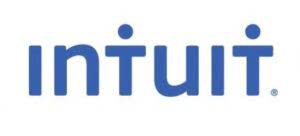21 diciembre, 2022

For example, businesses with a beginning inventory of perishable goods will usually choose FIFO, since it’s in their best interest to sell older products before they expire. Using the appropriate inventory valuation system can help track real inventory management practices. For instance, it offers a more accurate valuation of current earnings, provides tax benefits and improves cash flow. When it’s time for the business owner to calculate the inventory for tax purposes, they can calculate the remaining stock at a lower amount with the help https://www.bookstime.com/ of LIFO. The main important reason behind this is the presence of disproportionately priced items in the inventory.

Great! The Financial Professional Will Get Back To You Soon.
Using the newest goods means that your cost of goods sold is closer to market value than if you were using older inventory items. When reviewing financial statements, this can help offer a clear view of how your current revenue relates to your current spending. Since LIFO uses the most recent, and therefore usually the more costly goods, this results in a greater expense recorded on a company’s balance sheet. This translates to a lower gross income and therefore a lower tax liability.
FIFO Example

The LIFO method is used in the COGS (Cost of Goods Sold) calculation when the costs of producing a product or acquiring inventory has been increasing. Michelle Payne has 15 years of experience as a Certified Public Accountant with a strong background in audit, tax, and consulting services. She has more than five years of experience working with non-profit organizations in a finance lifo accounting formula capacity.
- The earliest unit is the single unit in the opening inventory and therefore the remaining two units will be assumed to be from the current month’s purchase.
- The method allows them to take advantage of lower taxable income and higher cash flow when their expenses are rising.
- Calculate the value of ending inventory, cost of sales, and gross profit for Lynda’s first six days of business based on the LIFO Method.
- We’ll use the same worksheet format as before and do our calculations step by step, tracking purchases, COGS, and inventory on hand for each date something happens.
- There are three other valuation methods that small businesses typically use.
- In other words, FIFO is an ideal method for rising prices, while LIFO should be used when prices fall as expensive products get sold first.
Last In, First Out (LIFO): The Inventory Cost Method Explained

The year-to-year changes in the balance within the LIFO reserve can also give a rough representation of that particular year’s inflation, assuming the type of inventory has not changed. To determine COGS under LIFO, identify the cost of the most recent inventory purchases and multiply by the quantity of inventory sold. LIFO finds its primary application in the United States, where it is a permissible accounting method. Its use is less common in countries like India, where tax laws and regulations differ. This piece retained earnings delves into the LIFO accounting method, offering clarity on its suitability for various businesses.

Keep up with Michelle’s CPA career — and ultramarathoning endeavors — on LinkedIn. If you’re a business looking for the most amount of detail, specific inventory tracing has the insight you’ll need. But it requires tracking every cost that goes into each individual piece of inventory. Because Sylvia’s cost per platter is going down, she will always be counting the most expensive inventory as what’s left over. Since most retailers are looking to sell their oldest stock first, the LIFO method is unintuitive. But in some cases, it can make your business look more profitable or be a better representation of how your business operates.
- Even if a company produces only one product, that product will have different cost values depending upon when they produce it.
- The reason for organizing the inventory balance is to make it easier to locate which inventory was acquired most recently.
- In total, the cost of the widgets under the LIFO method is $1,200, or five at $200 and two at $100.
- Whether your inventory costs are changing or not, the IRS requires you to choose a method of accounting for inventory that’s consistent year over year.
- The LIFO method, Last-In-First-Out, values inventory based on recently added items.
- Regular inventory turnover tends to keep inventory value closer to market value and is a more realistic representation of how most companies move their products.
- LIFO (“Last-In, First-Out”) means that the cost of a company’s most recent inventory is used instead.
The LIFO Inventory Method Assumes That the Units Sold Are…
Based on the calculation above, Lynda’s ending inventory works out to be $2,300 at the end of the six days. She launched her website in January this year, and charges a selling price of $900 per unit. In many cases, customers prefer to have newer goods rather than older products. Particularly if you work in an industry where goods decay over time, using LIFO can ensure that customers receive fresh goods. This can help your business build positive credibility with your customer base. Learn more about what LIFO is and its impact on net income to decide if LIFO valuation is right for you.
- Also, once you adopt the LIFO method, you can’t go back to FIFO unless you get approval to change from the IRS.
- Some key elements include income statements, gross profit, and reporting compliance.
- A LIFO periodic system finds the value of ending inventory by matching the cost of the earliest purchase of the accounting period to the units of ending inventory.
- Last in, first out (LIFO) is a method used to account for business inventory that records the most recently produced items in a series as the ones that are sold first.
- We don’t bother color coding them because we don’t get significantly better information using that system.
How To Calculate FIFO and LIFO
As a business owner operating in the USA, it’s important to familiarize yourself with the Last-In-First-Out (LIFO) inventory valuation method. A key aspect of LIFO is its potential to reduce reported profits, subsequently lowering taxable income. However, it’s crucial to consider that adopting this method may affect your ability to secure credit, as lenders often look at profitability as a key indicator of financial health. Before implementing LIFO, weigh the impact of showing lower profits on your business’s ability to obtain financing. This approach is particularly relevant in industries where product prices are subject to inflation or frequent fluctuations. By selling the newest inventory first, the cost of goods sold reflects current market prices, potentially leading to higher reported costs and lower taxable income, assuming prices are rising.
